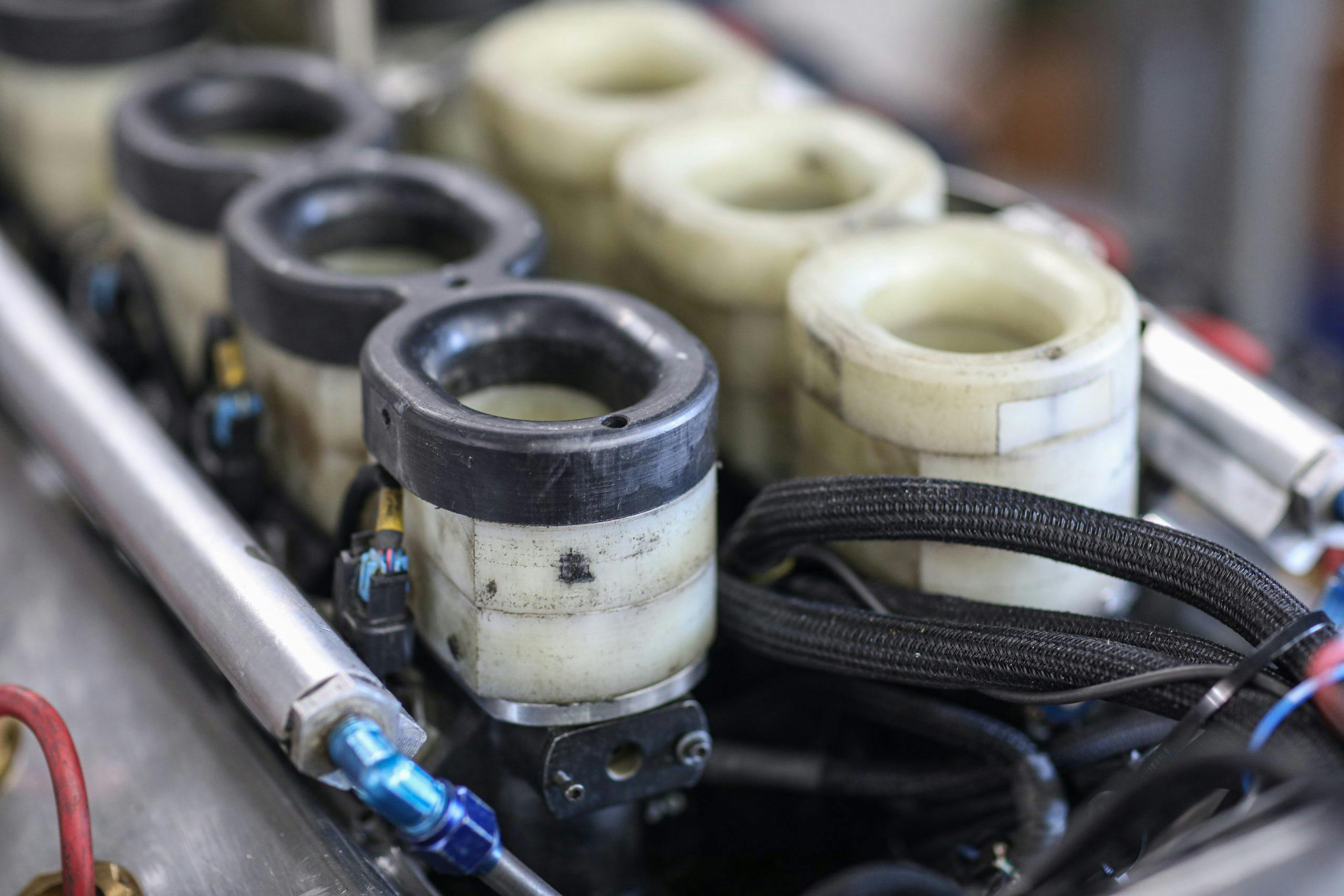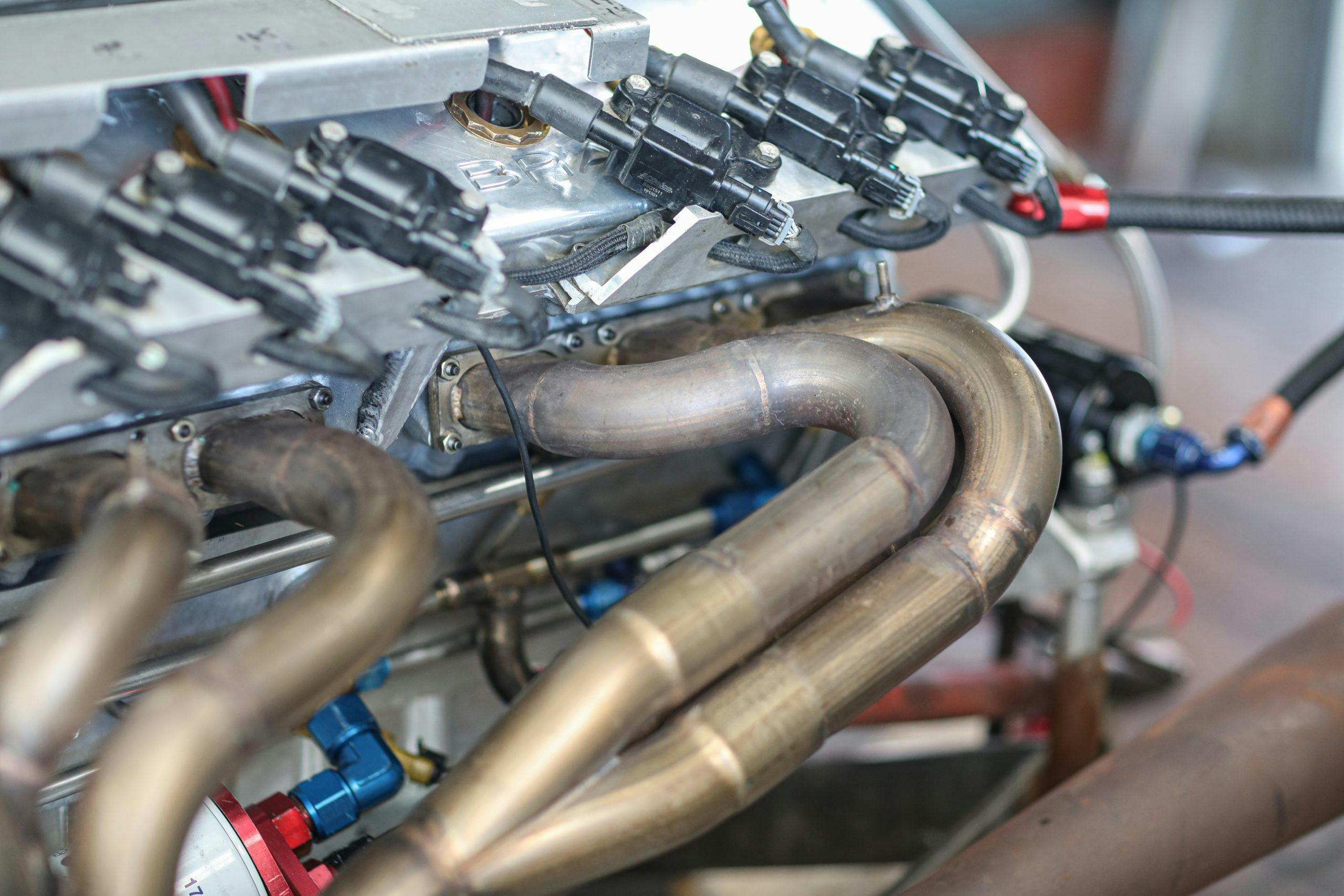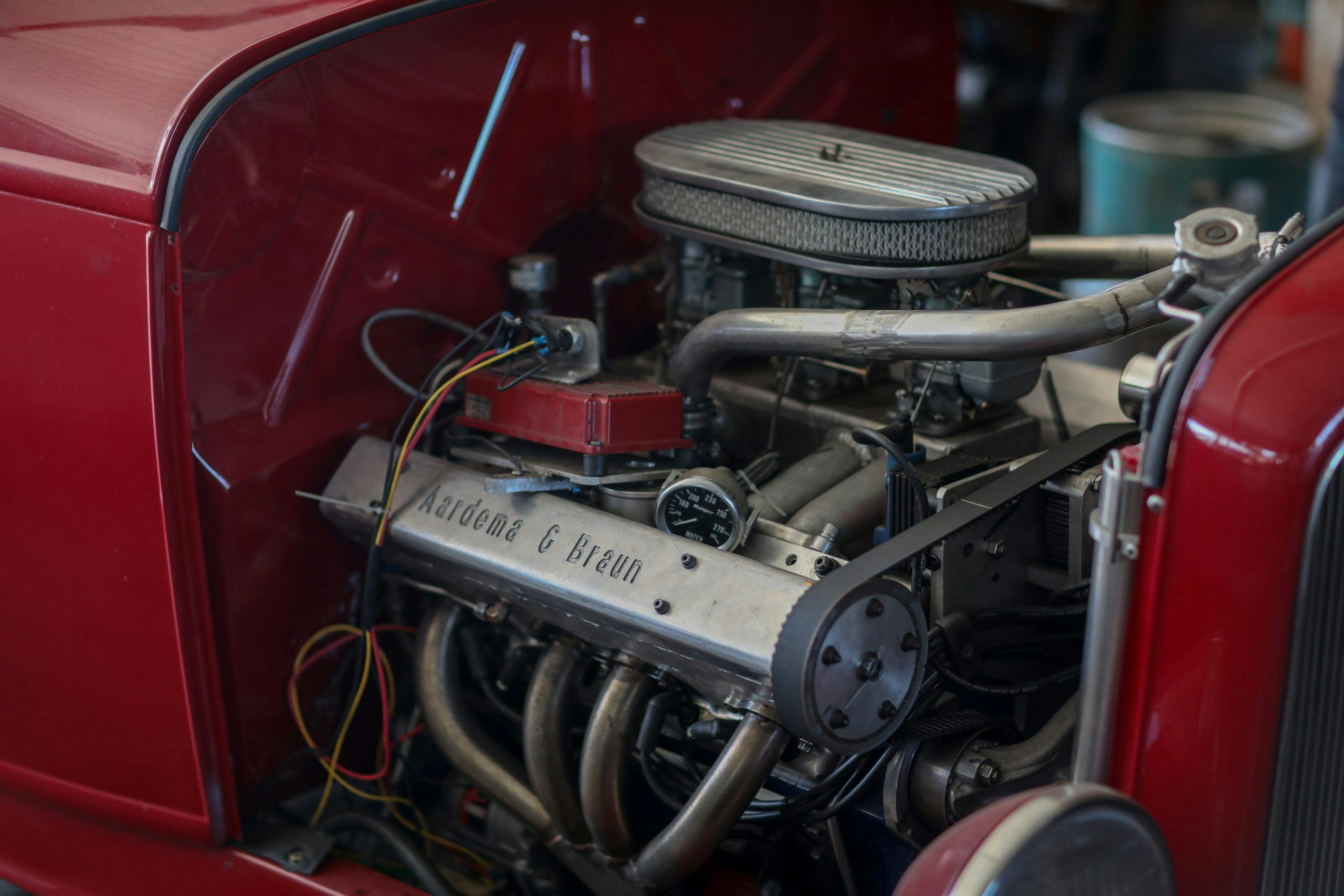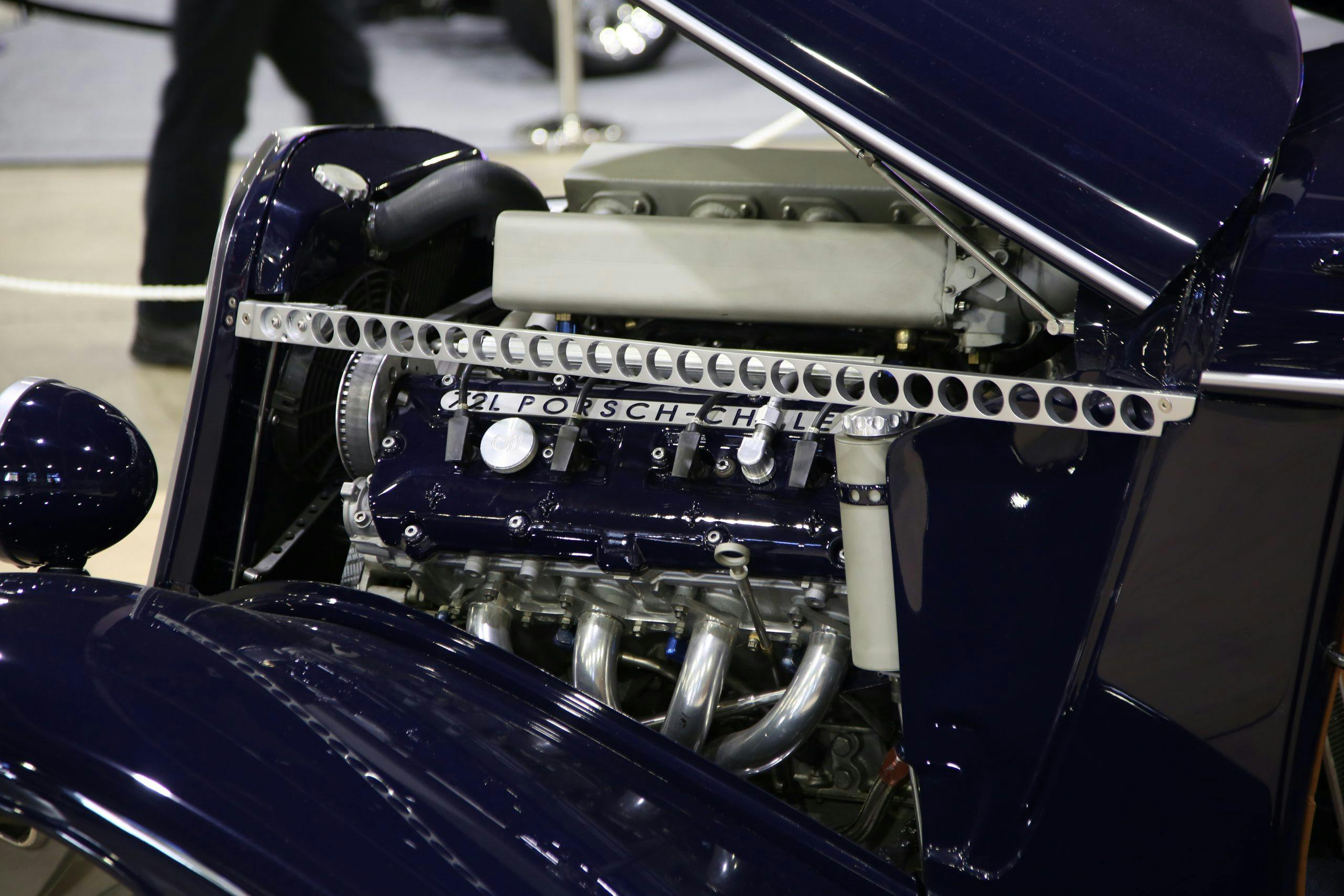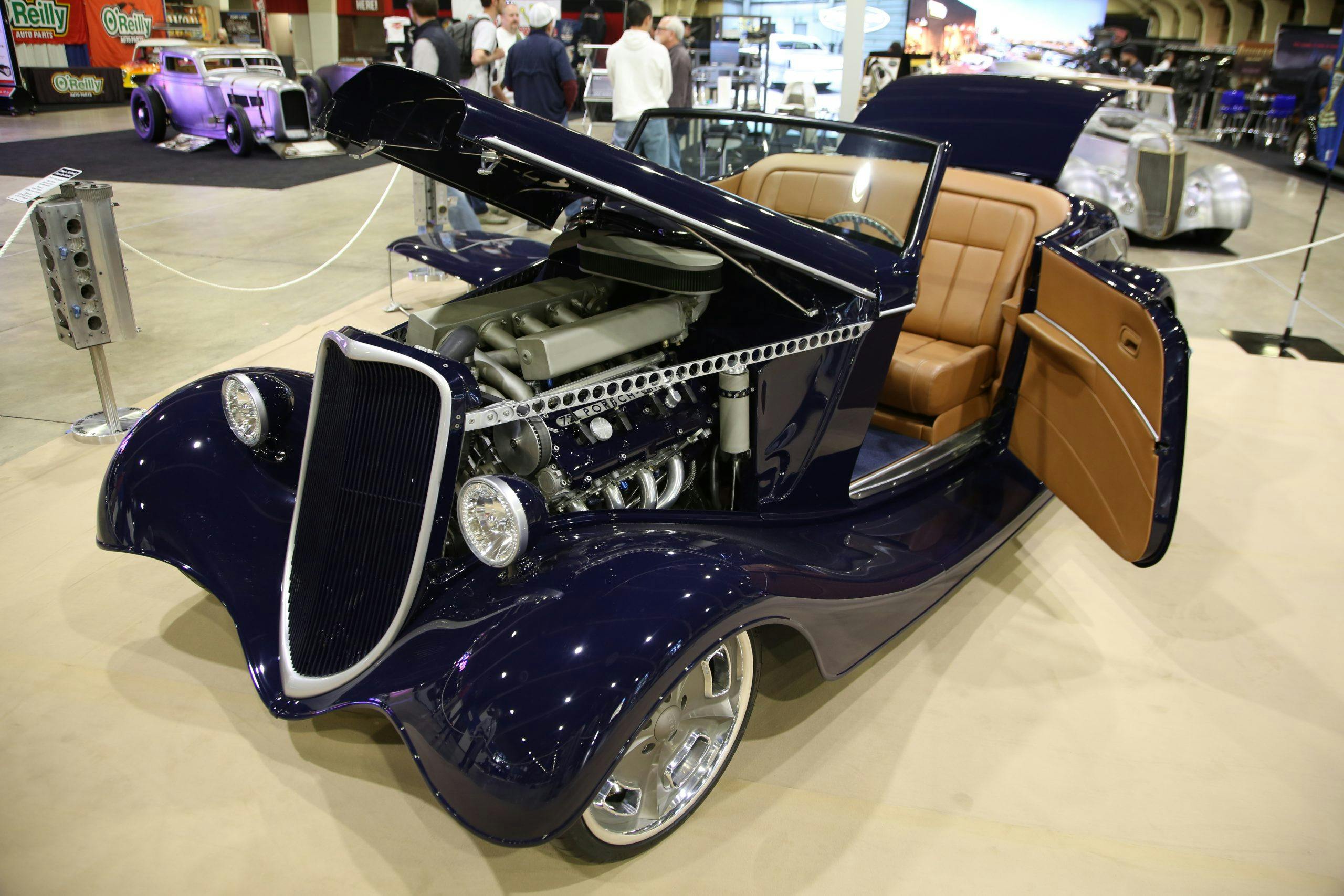Media | Articles
The mad machinists who built a 920-hp V-12 nearly from scratch
Pete Aardema and Kevin Braun have worked together to develop some of land speed racing’s most intriguing engines. They’ve built Chevrolet LT5s and adapted various racing cylinder heads onto vintage engines, setting dozens of records at Bonneville and El Mirage over the last 30 or so years. The duo’s latest creation is a bespoke V-12 with a totally custom bottom end. The topper? A a pair of cylinder heads that are each cobbled together from two Oldsmobile Aurora Indy V-8 heads.
We’ve seen Aardema at Bonneville Speed Week for years, always marveling at the creations that he and Braun churn out. At Speed Week 2021, the sleek lakester he built with Braun drove to 278 mph on a 276.786 mph record, qualifying and heading to impound to back it up, but they discovered they sacrificed a pair of pistons and would not be able to make a return run to claim a record.

The one-off engine was built using a custom 2.75-inch-stroke Scat crankshaft and a block welded into existence from aluminum C-channel and plate. The cylinder heads came from Oldsmobile’s Indy racing days, with each individual V-12 cylinder head made from a matching pair of V-8 heads, each with a cylinder removed. Braun lined up the cam bores, as they were the critical dimension, before welding two cylinder heads into one. With 3.75-inch pistons, the displacement comes in at 6.0 liters.
Aardema is a huge proponent of overhead-cam engines and has built dozens of unique conversions, including an OHC-converted flathead Ford in his personal ’32 roadster and a big-block Chevy V-8 that uses Porsche four-valve heads. Don’t get us wrong, we’ve got nothing against pushrods. LS, LT, and late-model Hemi engines prove that pushrods engines can be powerful, fun, and make some great noise. (And let’s not forget about the Viper.) Even Ford, longtime purveyors of domestic overhead cam V-8s including the excellent Coyote and mesmerizing Voodoo V-8, have pushrod V-8s in pickup production, both gasoline and diesel.

Still, there are clear advantages to overhead-cam engines, particularly dual-overhead-cam engines with four valves per cylinder. When power density is of utmost importance, it’s hard to argue against an engine architecture that allows for high-flow cylinder heads that don’t make the ports compete for space with a lowly pushrod. Four-valve heads also mean the valves are smaller and easier to control as engines speeds climb, and that’s the real key to naturally aspirated power. Getting comparable cylinder head flow from only two valves means a pushrod engine must rely on huge, comparatively heavy valves that require high spring pressures to keep under control. That comes with additional friction in the valvetrain that costs power and, often, longevity.
Marketplace
Buy and sell classics with confidence
So, does the V-12 work? Sure does. Just take a look at this dyno graph and chart to see how the engine revs to nearly 10,000 rpm and produces more than 900 hp starting at just over 9000 rpm.
For good measure, here is a video of Braun and Aardema talking about the development of the engine.
And here is a video of the engine in action:
What noise! But what just as amazing is that Braun, who machines the engines on some impressive mills, also uses some old-school methods to test his theories on car design.
This wooden model was built by a friend of his and weighted to have the same center of gravity as the real car. Then, this model was rigged up on a stand in front of Braun’s pickup and allowed to pivot on its center of gravity as he took the truck up to highway speeds. Before it was given vertical stabilizers, the car would spin unpredictably. The fins ultimately got the car to track straight and true, and high-speed runs at Bonneville have so far borne out the results of the test.
With the V-12 now rebuilt after Speed Week 2021, Aardema and Braun will be ready to put it back in the car for Speed Week 2022. In the meantime, a Gen-1 Chevy small-block with LT5 heads is currently powering their lakester, and it’s set up to attack the lakebed at El Mirage. If you needed one more excuse to see land speed racing in person, consider Braun and Aardema’s creations the last straw. Their clever engineering alone is worth the trip to the salt, and that sound is just icing.

